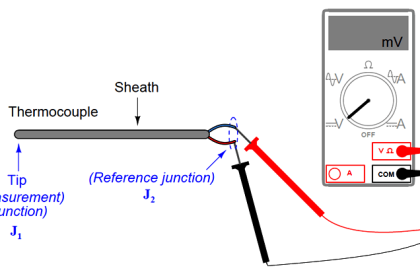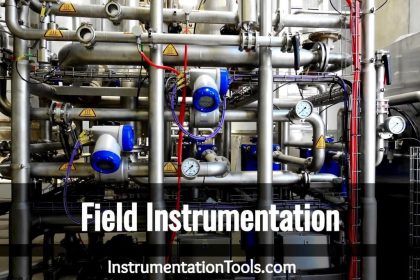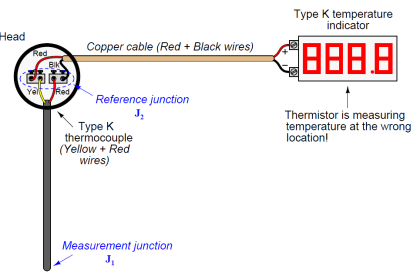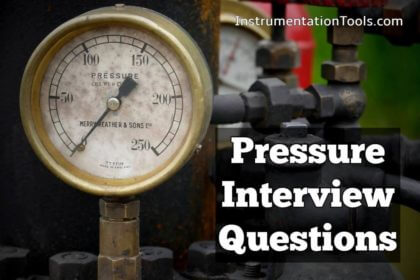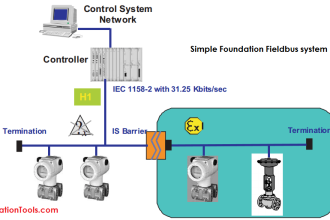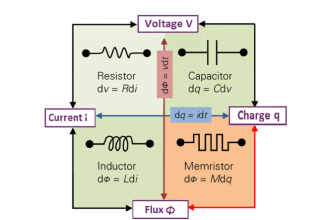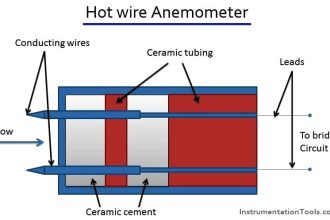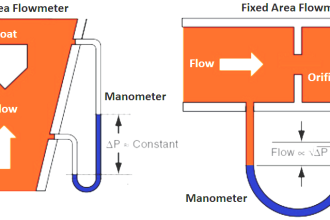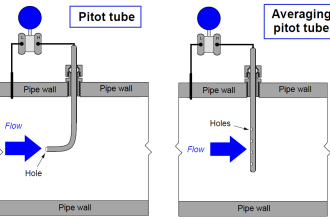1. What is the difference between a Mineral Insulated (MI) and a fabricated sheath?
An MI is flexible, a fabricated sheath is rigid.
2. How accurately can I measure temperature using a standard sensor?
To published, internationally specified tolerances as standard, typically ± 2.5°C for popular thermocouples, ±0.5°C for PRT. Higher accuracy sensors can be supplied to order, e.g. ±0.5°C for type T thermocouple, ±0.2°C for PRT. All of these values are temperature dependent. A close tolerance, 4-wire PRT will give best absolute accuracy and stability.
3. How do I choose between a thermocouple and a PRT?
Mainly on the basis of required accuracy, probe dimensions, speed of response and the process temperature.
4. My thermocouple is sited a long way from my controller, is this a problem?
It could be; try to ensure a maximum sensor loop resistance of 100 Ohms for thermocouples and 4-wire PRTs. Exceeding 100 Ohms could result in a measurement error. Note By using a 4-20mA transmitter near the sensor, cable runs can be much longer and need only cheaper copper wire. The instrument must be suitable for a 4-20mA input though.
5. What is the difference between a RTD and PRT sensor?
Nothing. RTD means resistance thermometer detector (the sensing element) and PRT means Platinum resistance thermometer (the whole assembly) i.e. a PRT uses a RTD!
6. What is a Pt100?
An industry standard Platinum RTD with a value of 100 Ohms @0°C to IEC751; this is used in the vast majority of PRT assemblies in most countries.
7. Should I choose a Type K or Type N thermocouple?
Generally, Type N is more stable and usually lasts longer than Type K; N is a better choice for high temperature work depending on the choice of sheath material.
8. Does it matter what type of steel I specify for the thermocouple sheath?
Often no, sometimes yes. In some cases, reliability depends on the ideal choice of material.
9. Are there other types of temperature sensor apart from thermocouple and PRT Types?
Several, but these two groups are the most common. Alternatives include thermistors, infra-red (non-contact), conventional thermometers (stem & dial types) and many others.
10. Why are so many different types of thermocouple used?
They have been developed over many years to suit different applications world-wide as per temperature ranges.
11. What is a duplex sensor?
One with two separate sensors in a single housing
12. Why use a thermowell?
To protect the sensor from the process medium and to facilitate its replacement if necessary.
13. I use many thermocouples in testing and experiments, can I make my own thermocouple junctions?
Yes, using a benchtop welder and fine thermocouple wires – it is easy and inexpensive to make unsheathed thermocouples.
14. Why should I use actual thermocouple connectors instead of ordinary electrical connectors?
Good quality thermocouple connectors use thermocouple alloys, polarized connections and colour coded bodies to guarantee perfect, error-free interconnections.
15. Why offer 2,3 or 4 wire PRT probes?
Because all 3 are encountered. Two-wire should be avoided, three-wire is widely used and four-wire gives optimum accuracy. Your instrument will be configured for 2,3 or 4 wire.
16. For thermocouple cable and connectors, why are there two colours available for the same calibration?
Since December 1998, the International colour code to IEC 60584-3 should be observed.
17. I need to measure quickly changing temperature; what type of sensor should I use?
A fast-response (low thermal mass) thermocouple.
18. What is the minimum immersion depth for a PRT probe?
Usually 150mm or more; increase the immersion until the reading is unchanged.
19. How do I accurately measure a surface temperature?
Use a sensor designed specially for this or use an infra-red (non-contact) sensor instead.
20. What is the practical difference between wire-wound and film RTDs?
Wire-wound type provides greater accuracy and stability but is vulnerable to shock; film type is resistant to shock and has quicker thermal response.
21. What do the thermocouple terms “cold junction compensation” and “linearisation” mean?
Refer to this Labfacility Temperature Handbook for a full explanation. With most types of measuring instrument, these functions are automatically applied and do not require user consideration.
22. There are several different types of extension cable construction; is the choice important?
Yes; some are waterproof, some mechanically stronger, some suitable for high or low temperature.
23. Is a sensor with a calibration certificate more accurate than an uncalibrated one?
No. However, the errors and uncertainties compared with a reference sensor are published and corrected values can be used to obtain better measurement accuracy.
24. How long will my sensor last in the process?
Not known but predictable in some cases; this will be a function of sensor type, construction, operating conditions and handling.
25. I need to use “fail-safe” alarms on my process. Can my controller and alarms share the same thermocouple?
Use duplex sensors, one connected to the controller and the other to the alarm. Your controller may have alarms incorporated in which case you are relying on your control sensor.
26. Which thermocouple type do I need for my application?
This depends on several factors including the nature of the process, heated medium and temperature.
27. What is the longest thermocouple I can have without losing accuracy?
Try to ensure a maximum sensor loop resistance of 100 Ohms for thermocouples and 4 wire PRTs. Exceeding 100 Ohms could result in a measurement error. Note By using a 4-20mA transmitter near the sensor, cable runs can be much longer and need only cheaper copper wire. The instrument must be suitable for a 4-20mA input though.
28. Do I need a power supply when using a transmitter, and what length of extension lead can I run with a transmitter fitted?
A 24Vdc, 20mA supply will be needed if this is not incorporated in the measuring instrument. Long runs of copper cable can be used.
29. What accuracy will I get at a certain temperature using a Pt100 detector; if a better grade detector is used what effect will this have to the accuracy?
Refer Temperature Handbook for Pt100 tolerance information.
30. What sensor will I need to work in molten metal or a corrosive atmosphere?
There is no simple answer but special grades of Stainless Steel, Inconel 600, Nicrobell and Ceramics offer alternatives.
31. What accuracy loss will I get using a transmitter in line?
This depends on the accuracy of the specified transmitter; there will always be some degradation.
32. As most instrumentation only takes 2 or 3 wire Pt100s, if I took the correction made on the 3 wire system and incorporated that on to the single leg could I achieve a 4 wire system?
No; cable length and ambient temperature variations come into play.
33. Can I still purchase the old BS colour code and why has everything gone Over to IEC?
Some companies can supply some products to the “old” obsolete BS colour but the current IEC standard is internationally recognised.
34. What is the difference between a fabricated thermopocket and solid drilled Thermowell?
A fabricated thermopocket uses a welded construction to allow for relatively long immersion lengths; a thermowell is machined from solid material.
35. If I have a thermowell in my process; how much probe length do I allow for my Temperature sensor to suit?
An extra 50mm for a compression gland if used or probe length to fully seat into the well if a thread below head.
36. What typical pressure are thermowells / thermopockets rated to and what is the Thermal response time of the thermowell?
Typically tens of bar and tens of seconds more than the sensor. Refer to a full supplier specification however – values vary.
37. What is the difference between a flat film and wire wound Pt100 element?
Film uses platinum deposition on a substrate; wire wound uses a helically wound Pt wire in ceramic. Wire-wound type provides greater accuracy and stability but is vulnerable to shock; film type is resistant to shock and has
quicker thermal response.
38. If copper can be used at the same point on each leg of a thermocouple can I use Copper connectors on thermocouples?
Yes but only if both legs are maintained at exactly the same temperature. Not recommended.
39. If I added two identical cable lengths to a simplex thermocouple sensor for two instrumentation Units will I get the same reading as using a duplex sensor?
Yes, provided the instrument inputs are truly potentiometric and no measuring current is drawn. Not recommended.
40. Why should I use an insulated hot junction sensor with instrumentation?
To eliminate the possibility of earth loops resulting in measurement errors and to reduce the danger of voltage pick up from electrical heaters.
41. What is Automatic Cold Junction Compensation?
This is a feature of most measuring instruments which allows for the fact that the thermocouple input termination is at varying temperature other than stable at 0°C.
Remember, the sensor type must always suit the measuring instrument and employ the correct extension cable. Information given here is for general guidance only and is not definitive – it is not intended to be the basis for product installation or decision making.
42. Why Use a Thermocouple?
Advantages
- Temperature range: Most practical temperature ranges, from cryogenics to jet-engine exhaust, can be served using thermocouples. Depending on the metal wires used, a thermocouple is capable of measuring temperature in the range –200°C to +2500°C.
- Robust: Thermocouples are rugged devices that are immune to shock and vibration and are suitable for use in hazardous environments.
- Rapid response: Because they are small and have low thermal capacity, thermocouples respond rapidly to temperature changes, especially if the sensing junction is exposed. They can respond to rapidly changing temperatures within a few hundred milliseconds.
- No self heating: Because thermocouples require no excitation power, they are not prone to self heating and are intrinsically safe.
Disadvantages
- Complex signal conditioning: Substantial signal conditioning is necessary to convert the thermocouple voltage into a usable temperature reading. Traditionally, signal conditioning has required a large investment in design time to avoid introducing errors that degrade accuracy.
- Accuracy: In addition to the inherent inaccuracies in thermocouples due to their metallurgical properties, a thermocouple measurement is only as accurate as the reference junction temperature can be measured, traditionally within 1°C to 2°C.
- Susceptibility to corrosion: Because thermocouples consist of two dissimilar metals, in some environments corrosion over time may result in deteriorating accuracy. Hence, they may need protection; and care and maintenance are essential.
- Susceptibility to noise: When measuring microvolt-level signal changes, noise from stray electrical and magnetic fields can be a problem. Twisting the thermocouple wire pair can greatly reduce magnetic field pickup. Using a shielded cable or running wires in metal conduit and guarding can reduce electric field pickup. The measuring device should provide signal filtering, either in hardware or by software, with strong rejection of the line frequency (50 Hz/60 Hz) and its harmonics.
43. Thermocouple Errors
These errors are introduced by the thermocouple. The voltage generated by the thermocouple is proportional to the temperature difference between the point where the temperature is measured and the point where it connects to the device. Temperature gradients across the thermocouple wire can introduce errors due to impurities in the metals, which can be large relative to most measurement devices. Refer to the thermocouple documentation to understand its accuracy impact to the overall measurement.
